Every Monday I post some of the books I have received in the previous week. Embedded in the book covers and post will also be links to buy the books on Amazon India. This post will be in addition to my regular blog posts and newsletter.
In today’s Book Post 7 I have included some titles that I received in the past few weeks and are worth mentioning and not necessarily confined to parcels received last week.
Enjoy reading!
27 August 2018
Every Monday I post some of the books I have received in the previous week. Embedded in the book covers and post will also be links to buy the books on Amazon India. This post will be in addition to my regular blog posts and newsletter.
In today’s Book Post 6 I have included some titles that I received in the past few weeks and are worth mentioning and not necessarily confined to parcels received last week.
Enjoy reading!
20 August 2018
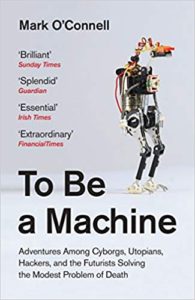 Religion, more or less, arises out of divine wreckage. And science, too — religion’s estranged half sibling — addresses itself to such animal dissatisfactions. In The Human Condition, writing in the wake of the Soviet launch of the first space satellite, Hannah Arendt reflected on the resulting sense of euphoria about escaping what one newspaper report called “men’s imprisonment to the earth.” This same yearning for escape, she wrote, manifested itself in the attempt to create superior humans from laboratory manipulations of germ plasm, to extend natural life spans far beyond their current limits. “This future man,” she wrote, “whom the scientists tell us they will produce in no more than a hundred years, seems to be possessed by a rebellion against human existence as it has been given, a free gift from nowhere ( secularly speaking), which he wishes to exchange, as it were, for something he has made himself.”
Religion, more or less, arises out of divine wreckage. And science, too — religion’s estranged half sibling — addresses itself to such animal dissatisfactions. In The Human Condition, writing in the wake of the Soviet launch of the first space satellite, Hannah Arendt reflected on the resulting sense of euphoria about escaping what one newspaper report called “men’s imprisonment to the earth.” This same yearning for escape, she wrote, manifested itself in the attempt to create superior humans from laboratory manipulations of germ plasm, to extend natural life spans far beyond their current limits. “This future man,” she wrote, “whom the scientists tell us they will produce in no more than a hundred years, seems to be possessed by a rebellion against human existence as it has been given, a free gift from nowhere ( secularly speaking), which he wishes to exchange, as it were, for something he has made himself.”
A rebellion against human existence as it has been given: this is as good a way as any of attempting to encapsulate what follows, to characterize what motivates the people I came to know in the writing of this book. These people, by and large, identify with a movement known as transhumanism, a movement predicated on the conviction that we can and should use technology to control the future evolution of our species. It is their belief that we can and should use technology to augment our bodies and our minds; that we can and should eradicate aging as a cause of our death; that we can and should use technology to augment our bodies and our minds; that we can and should merge with machines, remaking ourselves, finally, in the image of our own higher ideals. They wish to exchange the gift, these people, for something better, something man-made. ( p.2)
….
In philosophy of mind, the notion that the brain is essentially a system for the processing of information, and that in this it therefore resembles a computer, is known as computationalism. As an idea, it predates the digital era. In his 1655 work De Corpore, for instance, Thomas Hobbes wrote, “By reasoning, I understand computation. And to compute is to collect the sum of many things added together at the same time, or to know the remainder when one thing has been taken from another. To reason therefore is the same as to add or subtract.”
And there has always been a kind of feedback loop between the idea of the mind as a machine, and the idea of machines with minds. “I believe by the end of the century,” wrote Alan Turing in 1950, “one will be able to speak of machines thinking without expecting to be contradicted.”
As machines have grown in sophistication, and as artificial intelligence has come to occupy the imaginations of increasing numbers of computer scientists, the idea that the functions of the human mind might be stimulated by computer algorithms has gained more and more momentum. In 2013, the EU invested over a billion euros of public funding in a venture called the Human Brain Project. The project, based in Switzerland and directed by the neuroscientist Henry Markram was set up to create a working model of a human brain and, within ten years, to simulate it on a supercomputer using artificial neural networks.
( p.55-56)
Wellcome Book Prize 2018 winner Mark O’Connell’s To Be a Machine: Adventures Among Cyborgs, Utopians, Hackers, and the Futurists Solving the Modest Problem of Death is an incredible account of the journalist’s investigation into what is transhumanism and who are these people actively engaged in this movement, in their search for the Holy Grail of longevity with the help of technology. It is an astonishing book for the amount of research involved, the innumerable meetings, the conferences attended, ideas shared, all of which are pretty amazing given that money is being poured into researching this niche area of how the human life span can be increased. It it is the underlying, very human, deep fear of death that is propelling this research forward with entrepreneurs like Peter Thiel also involved in funding these activities. There are famous centres like the centre maintained by the Alcor Life Extension Foundation which is experimenting with cryogenics in keeping humans “alive”.
In this interview with The Irish Times, Mark O’Connell says “Transhumanism really is for me the displacement of yearnings and anxieties that have traditionally been the preserve of religion. But, overwhelmingly, that’s a sore point for transhumanists. They see themselves as the heirs to enlightenment. In their kind of hyper-rationalist thinking, any notion of spiritualism or mysticism is a complete anathema.”
In another interview with The Verge he says “When you talk to transhumanists, in one way or another, they all aspire to knowing everything and to being gods basically. And I just sort of thought, this is actually something I can’t relate to at all. The idea of being that all-powerful and omnipresent, it’s almost indistinguishable from not existing and I can’t quite justify that.
They’d say, you’ve got Stockholm syndrome of the human body. But that kind of idea is very unappealing to me. I can’t see why that would be your idea of your ultimate human value. I was always trying to come to grips with these ideas and come to grips with what it meant for these people to be post-human, and just wind up getting more confused about what it meant to be a human at all in the first place. I can identify with wanting to not die, but I can’t with wanting to live indefinitely.”
It is a surreal world that the transhumanists believe in, with almost an evangelical fervour for defeating mortality. The reason Mark O’Connell embarked upon this quest of his was because he had become a father for the first time and suddenly questions of mortality and death became very real. ( On a related note. Here is a superb article in The Paris Review of Mothers as Makers of Death by Claudia Dey, 14 August 2018.) But he is very clear, even after one a half years of research for this book, that he will never be a cyborg or a transhumanist. A fact he reiterates in the book as well as in an interview to The Millions. His deep dive in to the subject makes him an expert in the field so he recommended five books to understand transhumanism for The Guardian too (10 May 2018).
Whether you agree or not with the transhumanists, To Be a Machine must be read to understand how man is pushing the known boundaries of knowledge using technology to try and find an answer to the eternal question “How to overcome mortality?”. It is like reading science fiction except that all that is written in the book is very real — very real people, very real experiments in very real facilities. For now it may seem like a fanciful playground of a bunch of well-funded individuals ( mostly male) who may or may not find their Holy Grail, but a possible offshoot of this innovative research may have other more practical applications. Who knows?! Only time will tell.
To buy the book published by Granta on Amazon India:
17 August 2018
It is an uncanny coincidence that today two seminal articles have been published online analysing journalism as we know it today and its complicity with the powers that be even if it means resorting to unethical practices and compromising their positions. Both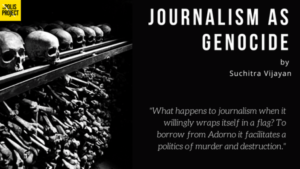 articles are by reputed journalists. The first is by Rafia Zakaria in the Baffler called “Stalking the Story” or what she sees as the calling card of predator journalists. The second is by Suchitra Vijayan as a part of The Polis Project called “Journalism as Genocide” tracking hate speeches, fake news etc as propaganda tools to ultimately result in hate crimes such as genocide or other forms of violence like lynchings and the attempted assassination attack on student activist Umar Khalid.
articles are by reputed journalists. The first is by Rafia Zakaria in the Baffler called “Stalking the Story” or what she sees as the calling card of predator journalists. The second is by Suchitra Vijayan as a part of The Polis Project called “Journalism as Genocide” tracking hate speeches, fake news etc as propaganda tools to ultimately result in hate crimes such as genocide or other forms of violence like lynchings and the attempted assassination attack on student activist Umar Khalid.
Umar Khalid
Posted by Nadeem Khan on Monday, August 13, 2018
Rafia Zakaria says in her concluding remarks:
The predator journalist is a creation of the War on Terror, whose narrative requires all that is Western to be anointed while everything else is reduced as a tool in service of it. The journalist who sets out to “unravel” its mysteries is thus as much a warrior in service of this narrative as the soldier who visibly enacts its agenda. All this would at least be less objectionable if it were owned and admitted, if those searching for rape stories among Yazidi women or taking pictures of women attending secret schools did not pretend to be journalists or aligned with a code of ethics that requires consent of subjects, respect for their humanity, and a commitment to confidentiality.
The lethal aspect of the predator journalist is the pretense, the implication to readers that they are in fact “objective,” bound by ethics, even when no such moral restraint inhibits their actions. This is a debasement of the idea of truth, now reduced to an outmoded goal of journalisms past, whetted by a now-debunked idealism. The remainder is a crass predation, a reduction of insight to access, and deeply reported stories to orchestrations of pressure and predation on hapless subjects. In the theater of the War on Terror, the United States need no longer send predator drones; it can avail the talents of predator journalists, whose sly shape-shifting is a much sleeker and at times a more lethal weapon.
Suchitra Vijayan says:
Upon analyzing witness testimonies from the Nuremberg, Yugoslavia and Rwanda trials, two things become increasingly clear. First, truthful reporting of facts, analytical investigation of issues, and a stand against violence by journalists in all these instances could have both changed the behavior of the perpetrators, and in some instance even prevented the slaughter. Second, when airwaves become a platform for ideological, socio-religious-nationalist populism, there are clear roadmaps with milestones and perfected patterns of hate that lead to eventual violence and destruction of a society. Some of these milestones include:
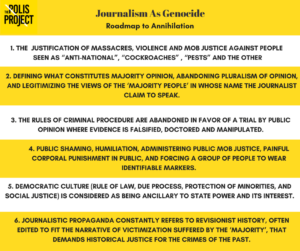
While the list enumerated above is a repetitive pattern of behavior gathered from over hundred witness testimonies from Nuremberg to Rwanda, their relevance resonates for India today, as we are birthing a new dystopia of hate and bigotry. This list holds up a haunting mirror to the ugliness on display and the vileness employed by some Indian news channels, anchors, and journalists. It is as much a war over the minds of the people, as it is a war to enact extrajudicial and unconstitutional laws that encroach into and legislate the private lives of citizens. The absolute essence of this priming is the stamping out of pluralism in all its forms – pluralism of ideas, opinions, faiths, beliefs, memories, myths and even gods.
…
Sudhir Chaudhary, editor, Zee News, in an interview to Outlook magazine stated that: “It has become necessary for media houses to take a stand on certain issues. It has to be a nationalistic approach. That benefits the people of India. What do you call neutral and secular? No one is neutral anymore. I will pitch for a nationalistic reporting, …” He further states, “If you want to live in India and want the breakup of India, then why do you want to live here? Leave the country and go.”
What happens to journalism when it willingly wraps itself in a flag? To borrow from Adorno it facilitates a politics of murder and destruction.
While nationalism will continue to mediate many facets of our life, it cannot become the prism through which we understand the complexities of the world. Chaudhary, and many like him, hold an immense power of persuasion and present a position of unthinking hawkish nationalism that uncritically propagates a retreat to banal patriotism. This excludes the possibility of criticising the state and its political projects. Journalism is not the witch’s brew from Macbeth, and journalists cannot become the agents of chaos and conflict. Journalism demands detachment and objectivity that allows for dissent, disagreement, and freedom of expression. In the absence of such ethics, it clears the ground for violence and does a great disservice to the democratic way of life.
While handing down its judgment in the media trial, the ICTR rightly criminalized the hate speech of a powerful media against a vulnerable minority. The great fight for individual humanity against crimes by the state – and the journalists who defend it – has to begin with accountability. To rephrase what Rwandan journalist Thomas Kamilindi testified at the war crimes’ tribunal, how should we hold journalists accountable for their actions, and if need be prosecute them, if they knowingly caused harm, and incited violence. We must find a way to articulate and respond to such abuses of power without violating the principles of freedom, which are an indispensable cornerstone of democracy.
14 August 2018
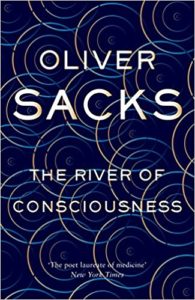 Sometimes it is impossible to “review” a book except to say “Read it”. Oliver Sacks The River of Consciousness is a fine example of this. It is a collection of his essays on diverse topics but with one objective — how does the brain work? How does it process? How does it affect memories? What is true and what is false? What is a figment of our imagination? What does science reveal? This is precisely the
Sometimes it is impossible to “review” a book except to say “Read it”. Oliver Sacks The River of Consciousness is a fine example of this. It is a collection of his essays on diverse topics but with one objective — how does the brain work? How does it process? How does it affect memories? What is true and what is false? What is a figment of our imagination? What does science reveal? This is precisely the 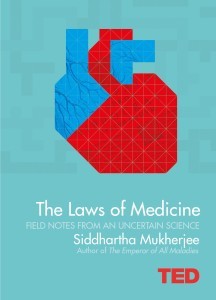 fundamental argument Siddharth Mukherjee makes in his Laws of Medicine TED talk. Irrespective of all the advancements in technology, it is the brain which remains the most important for the speed at which it analyses and processes information, constantly pushing known boundaries to discover new frontiers of knowledge that are so far unimaginable.
fundamental argument Siddharth Mukherjee makes in his Laws of Medicine TED talk. Irrespective of all the advancements in technology, it is the brain which remains the most important for the speed at which it analyses and processes information, constantly pushing known boundaries to discover new frontiers of knowledge that are so far unimaginable.
The River of Consciousness is a posthumous publication but in it is much food for thought. Whether it is discussing creative energies to how the brain works while analysing information as in the case of Charles Darwin or even how do children learn and process information are fascinating points to ponder upon. For instance Prof. Sacks says “Children have an elemental hunger for knowledge and understanding, for mental food and stimulation. They do not need to be told or ‘motivated’ to explore or play, for play, like all creative or proto-creative activities, is deeply pleasurable in itself.”
The River of Consciousness is an excellent book to possess and to return to often too.
To buy The River of Consciousness ( On Kindle ; Paperback ; Hardcover)
14 August 2018